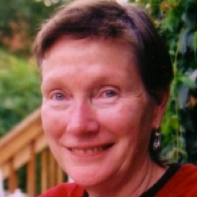Source: Uploaded by user via Candace on Pinterest
Wednesday, January 16, the Idle No More movement again peacefully stalled railway lines, highways, and bridges in at least six provinces: British Columbia, Alberta, Manitoba, Ontario, New Brunswick and Nova Scotia.
These peaceful demonstrations are prompted by the First Nations frustration with Canada’s federal conservative government and its violation of native rights.
The biggest protests were on two bridges that link Canada with the United States, a border which First Nations still see as a fictional division dividing indigenous tribes.
In Edmonton, Alberta a truck drove through a peaceful demonstration on the Queen Elizabeth II Highway, near the southern edge of the oil sands, but the demonstrators parted quickly enough so that no one was injured.
In Manitoba First Nations blocked the CN east-west track. By briefly stalling railway lines, the movement gets media attention for its cause. The repeal of the omnibus budget Bill C-45 . Specifically Idle No More demands transparency, safe drinking water, clear air and the protection of the native rights which Bill C-45 denies.
The Royal Proclamation of 1763 has protected all Canadian aboriginals and their right to land.
This Proclamation issued by King George III has survived 250 years until now with this newest omnibus Bill C-45. Of course there have been violations and harm done to specific tribes, native land flooded in British Columbia, for example; but until now there has not been an actual law canceling these human and environmental rights.
“The treaties are the last line of defense to protect water and lands from destruction,” says Oren Lyons, Faithkeeper of the Turtle Clan and of the Onondaga Nation Council of Chiefs.
Because the Conservative government’s Bill threatens treaties and indigenous sovereignty on native land, the Idle No More movement’s goal is not just protest, but education and revitalization.
“The revitalization of Indigenous peoples through Awareness and Empowerment…The world is watching how Canada responds to the message…Idle No More urges the government of Canada to repeal all legislation which violates Treaties, Indigenous Sovereignty, and subsequently Environmental Protection of land and water. Idle No More is grateful to many leaders who have supported this vision and the movement of the grassroots people.”
Former Liberal Prime Minister Paul Martin has been one of the most sympathetic. He met with Chief Spence and was very impressed. He has said to the media that aboriginals want opportunities, not handouts. And he said that child poverty is one of the main underlying issues of Idle No More, as native youth are the most vulnerable section of the Canadian population, condemned to under-education and deplorable living conditions.
Although native youth are the fastest growing segment of the nation’s population, they are the most susceptible to both infant mortality and teenage suicide. Yet the federal government neglects this population by underfunding their education.
Chief Isadore Day of the Serpent River First Nation in Ontario said that many chiefs now realize that demonstrations are the only logical course of action.
Chief Perry Bellegarde of the Federation of Saskatchewan Indian Nations said, “What you are seeing is just the frustration level that’s been built up over centuries of oppression and injustice, and economic marginalization—lands and resources being exploited without involvement or anything coming back to indigenous peoples.”
But the Idle No More movement continues to call for these demonstrations to be peaceful while demanding solutions not only to the current situation, but also to outstanding treaty and rights issues that have remained unresolved for too long.
As the Idle No More founders, organizers, and the elder advisors have written:
“Idle No More has a responsibility to resist current government policies in a Peaceful and Respectful way. It can be done. It can be done without aggression or violence. This is an energetic, exciting and transformative time.
This movement has been guided by Spiritual Elders, dreams, visions, and from peoples’ core values. We are here to ensure the land, the waters, the air, and the creatures and indeed each of us, return to balance and discontinue harming each other and the earth.”
If all chiefs get behind this grassroots movement it will be unstoppable. But it will be difficult for all 630 native communities in Canada to unite on these major issues, for it is rare that our 10 premiers ever agree even on one!
Nevertheless, that is the challenge. And the Assembly of First Nations (AFN) is a legitimate body headed by Chief Atleo, who is mandated by the membership to speak on a national basis. So it is possible.
Currently Chief Atleo is taking a week off due to the stress of the situation. Atleo is a good man and a good statesman in a difficult position. Together with former Occupiers and eco-activists, the Idle No More movement is gaining momentum. It is planning another Day of Action January 28, 2013—the very day that Canadian MPs return to the House of Commons. There are sure to be more protests near the capital.
And Chief Spence continues her fast, now into day 43, having already lost 30 pounds.
Spence is still waiting for a more inclusive big table meeting, the brief meeting in the little room with Harper not being adequate. Even if that never happens, she is a vivid reminder haunting Harper that the native issues are not yet resolved. From the native point of view her fast is not a matter of logic, but a matter of the heart.
As Wab Kinew, former reporter for CBC and current native of Canadian hip hop fame says, “We are all treaty people.”
Like elephant culture on Facebook.
Assistant Ed: Olga Feingold
Ed: Bryonie Wise
 Share on bsky
Share on bsky





Read 2 comments and reply